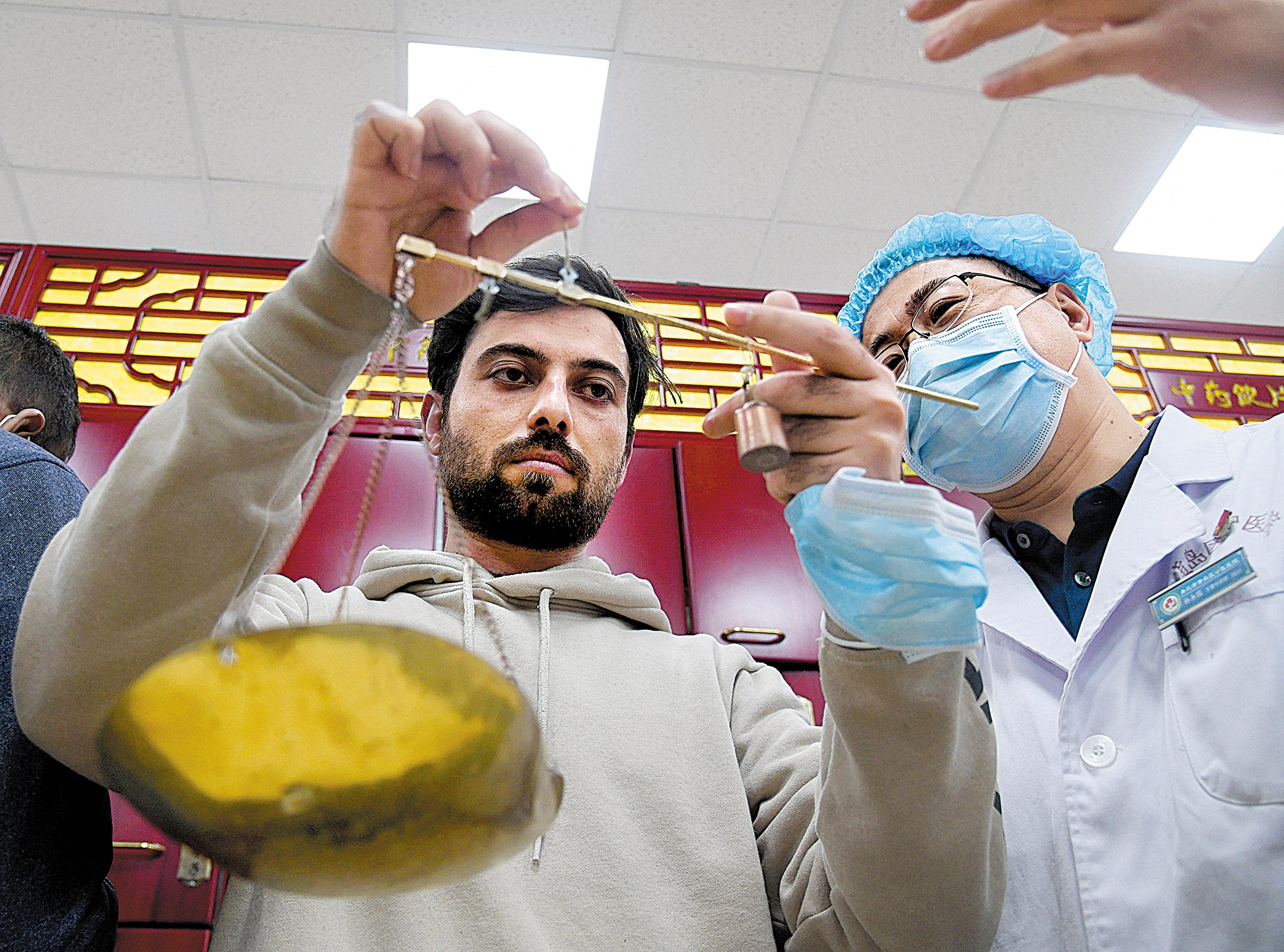Yin, yang and the wonders of TCM
THE ARTICLES ON THESE PAGES ARE PRODUCED BY CHINA DAILY, WHICH TAKES SOLE RESPONSIBILITY FOR THE CONTENTS

When Arvin Kuipers asks his patients to stick out their tongue so he can diagnose their ailments, many are confused.
Mr Kuipers, 30, who practises traditional Chinese medicine (TCM) in Amsterdam in the Netherlands, said: “In TCM I need to do face and tongue diagnosis. That’s strange for people in my country. They ask me, ‘What are you doing?’”
Diagnostic methods for TCM are so different from those used in western medicine that many people in the Netherlands and other countries – even patients with some knowledge of the subject – can have difficulty understanding what is happening.
One elderly woman had been visiting Kuipers occasionally for consultations, but her first encounter with TCM surprised her.
“She had never experienced acupuncture or any other TCM treatment. She came in, and I examined her face and tongue. I told the patient her kidneys were not doing well and that she wasn’t getting proper sleep,” said Kuipers, who graduated from Beijing University of Chinese Medicine in 2017 and loves Chinese culture.
The woman was shocked by his insight and asked if he had been spying on her. “As she had been sleeping very lightly, she thought I was some kind of magician. Actually, it was easy to diagnose her condition when I saw the dark rings under her eyes. Her energy levels were also very low at the time.”
Mr Kuipers opened his TCM clinic in September last year. Most of his work involves performing acupuncture, cupping and tuina, TCM massage that patients in the West like the most, he said. In some cases he also prescribes traditional herbal medicines.

Mr Kuipers usually makes a cup of Chinese tea to calm his patients if they are a little nervous about the acupuncture needles. He also explains to them the meridian system, which is a central concept of TCM; yin and yang, and other concepts, “so that they know a little of what I’ll be doing”, he said.
In TCM, good health requires balanced yin and yang,so practitioners not only pay attention to a patient’s ailment, but also to his or her overall physical condition, Mr Kuipers said. TCM is also a different culture and offers a new perspective, instead of being a curing method, he said.
He has gradually made “a good connection” with his patients as the treatment helps them. More people are visiting his clinic for their pain to be eased, bad skin conditions to be cured, or when they feel their energy levels are low.
The practice of TCM has gained a great deal of acceptance worldwide in recent decades. According to a XinhuaNet report, more than 13,000 foreign students come to China to learn the ancient form of medicine every year.
Pan Ping, director of the academic department at the World Federation of Chinese Medicine Societies, said TCM has become increasingly popular abroad in the five years since the first overseas TCM centre was built. By the end of last year more than 1 million foreigners had received treatment at such centres, he said.
Most of the centres are in countries and regions that are home to many people of Chinese descent, including some European countries, South-east Asia and the United States, Pan said.
This progress was illustrated by the purple cupping circles on the back of the US swimmer Michael Phelps during the Olympic Games in Rio de Janeiro, Brazil, in 2016. Leading international figures have also reportedly had such treatment, piquing interest in TCM in the west.
“In recent decades, internationalisation of TCM has also accelerated,” Pan added. “But there is still a long way to go. Standardisation is the key to going abroad, including standards for diagnosis and treatment, as well as medicine placement and processing. TCM talent is also in great demand.”
Previously published on Chinadaily.com.cn
